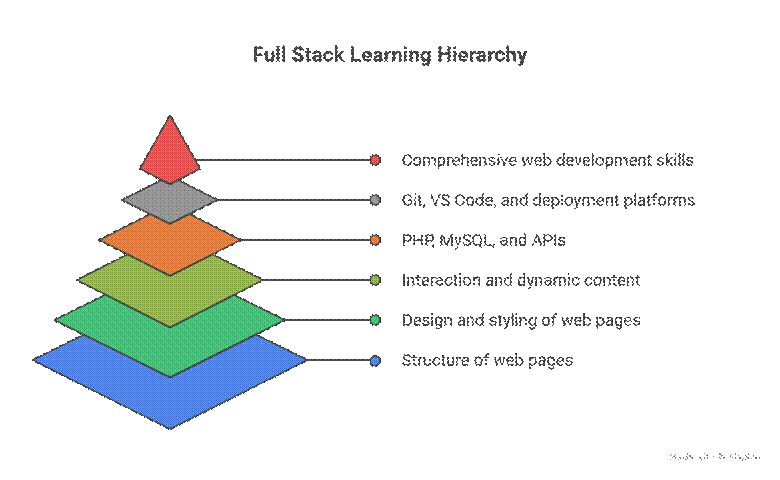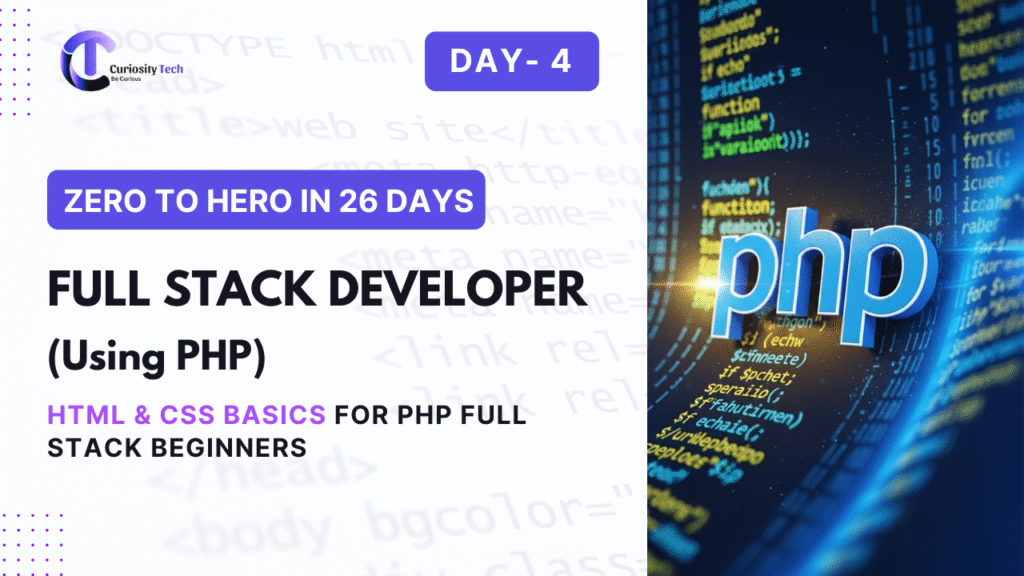When we talk about PHP Full Stack Development, it’s not just about writing backend logic or connecting databases. The journey starts from the frontend layer, because that’s what users actually interact with. Before diving deep into PHP, frameworks, and server-side scripting, every aspiring developer must master the fundamentals of HTML and CSS. These two technologies are the backbone of the web – they define structure, style, and the overall user experience.
At CuriosityTech.in, where learners are guided step by step into becoming industry-ready professionals, the teaching philosophy is simple: start with strong foundations, then build advanced skills layer by layer. Today’s topic is exactly about building that foundation.
Why HTML and CSS are Crucial for PHP Developers?
Many PHP beginners make the mistake of thinking: “I’m going to be a backend developer, so why bother with design or structure?”
The reality is – even if you’re working mostly on server logic, you must know how the frontend works, because every PHP script eventually interacts with HTML output.
Here’s why:
- HTML (HyperText Markup Language): Defines the structure of your webpage – headings, paragraphs, images, forms.
- CSS (Cascading Style Sheets): Controls how everything looks – colors, fonts, layouts, responsiveness.
- PHP Role: Embeds dynamic data into HTML and allows CSS-driven designs to stay interactive.
In short: HTML is the skeleton, CSS is the skin, and PHP is the brain.
Hierarchical Diagram of a PHP Full Stack Beginner’s Foundation
Here’s how the learning layers stack up:

This hierarchy shows why Day 4 (HTML & CSS) is placed before complex PHP topics in the learning journey.
HTML Basics Every PHP Beginner Should Know
Let’s break down the essentials:
| Concept | Purpose | Example |
| Tags | Define elements | <h1>Welcome</h1> |
| Attributes | Add properties | <img src=”logo.png” alt=”Logo”> |
| Forms | Collect user input | <form><input type=”text”></form> |
| Semantic Elements | Improve structure & SEO | <header>, <footer>, <article> |
👉 These are the building blocks you’ll later connect with PHP scripts, like handling login forms or storing data in databases.
CSS Basics That Bring Your Pages Alive
| Concept | Purpose | Example |
| Selectors | Target elements | p { color: blue; } |
| Box Model | Control spacing & layout | margin, padding, border |
| Flexbox/Grid | Modern layouts | display: flex; |
| Responsive Design | Mobile-friendly | @media (max-width: 600px) |
Without CSS, your webpage is like a textbook without formatting – all content, no design. With CSS, you create user experiences that attract and retain attention.
Infographic – How HTML, CSS, and PHP Work Together
(Visual Idea – can be designed later):
- HTML Layer: Creates a login form.
- CSS Layer: Styles the form beautifully for mobile and desktop.
- PHP Layer: Processes the input, validates user, and stores data in MySQL.
This three-tier interaction is at the heart of every full stack project.
CuriosityTech Approach to Learning HTML & CSS
At CuriosityTech.in, students don’t just learn tags and styles in isolation. Instead, training is project-based. For example:
- Day 1 Exercise: Create a personal profile page with HTML.
- Day 2 Exercise: Style it using CSS (colors, fonts, responsive grid).
- Day 3 Exercise: Add a PHP backend to process a “Contact Me” form.
This hands-on approach ensures that by the time learners dive into frameworks like Laravel or explore advanced concepts like REST APIs, they already have a natural fluency with HTML and CSS.
Conclusion
Before PHP can breathe life into websites, HTML and CSS must set the stage. Think of it as constructing a house: HTML is the structure, CSS is the paint and design, and PHP is the electricity that powers everything.
If you’re just starting your PHP Full Stack journey, take Day 4 seriously – it’s where the real building begins. With the structured guidance offered by CuriosityTech.in (Nagpur-based IT training hub with hands-on mentorship and career support), you won’t just “learn tags” – you’ll build real, working web projects step by step.

